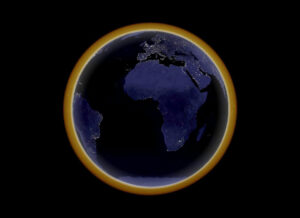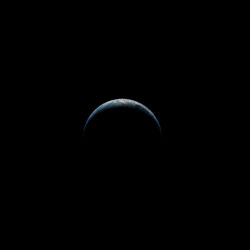We only say this blessing once every 28 years – that’s approximately a (lunar) month of years. I wrote a kavvanah in four parts to complement the traditional blessing. The blessing itself is completely simple: Barukh Atah…oseh ma’aseh v’reishit Blessed be You YHVH our God ruler of all space and time (ha’olam), who does the act of beginning-creation. Say it anytime during the first part of the morning on Wednesday, the day before the first seder, on your own, or together with folks. You can combine it with burning your chametz, doing a siyum for the firstborn etc.
My favorite line used in this liturgy comes from Pri Ets Hadar: “Return the whole of creation now to its original strength”—it’s something we desperately need our entire civilization to focus on. Prayer is part of that process of refocusing. I’ve also rewritten this liturgy to be used over the whole year. It could be recited as a prayer to follow counting the omer (for each day, like Ana b’Khoaḥ, or for the completion of each week), for the fires of Lag ba-Omer, and Rainbow Day, and as a prayer for the earth on Shabbat after Torah reading, alongside the prayer for the country and the prayer for Israel. See the year-round version here.
| Contribute a translation | Source (English) |
|---|---|
I.We come here ready to fulfill the Creator’s commandment | |
And we know that You promised ‘A day comes that burns like an oven'[2] Malakhi 4:1 — not just as a parable but as a warning. For You have given our hands power to overturn the orders of creation. But just as you promised, ‘a day comes,’ You also promised, ‘And the Sun of Righteousness will shine for you, and healing will be in her winged rays.'[3] shemesh tz’dakah, Malakhi 4:2, usually translated “…with healing in its wings”. Here the sun is feminine “her wings”, though in midrash and Ḳabbalah the sun is generally thought of as masculine. So may You bless us in Your mercy. | |
II.Please God, | |
Surround us with Shekhinah‘s radiance[5] what the righteous enjoy in the coming world, but also in the Sefardi Ushpizin something we pray for in the here and now. that the blessing of the sun may flow over us,[6] from Pri Ets Hadar, the first Tu Bish’vat seder, published in the 17th c. as part of the Ḳabbalistic work Ḥemdat Yamim. for life and not for death, for blessing and not for curse, as it says, ‘I will open for you the expanses of the Heavens[7] Malakhi 3:10-11, “expanses”, arubot, is used to describe the release of the flood waters in the Noah story; here it’s meaning is reversed from destruction to abundance. and I will empty out for you a blessing beyond what is enough and Earth’s fruit will not be destroyed because of you.'[8] ”destroyed because of you” — usually interpreted to mean “your produce will not be destroyed”, but new times reveal new meanings. | |
III.God full of compassion, | |
As an eagle arouses its nest,[12] Deuteronomy 32:11 arouse the flow of Love[13] shefa ratson, more precisely “the flow of desire”, found in the Pri Ets Hadar blessing for Tu Bish’vat. over Your world to give them all life, with the river of Your delights[14] Psalms 36:8 water them. Give the hungry their bread[15] Psalms 146:7 faithfully in all of their places of habitat. | |
IV.May it be Your will, YHVH our God and God of our ancestors | |
Blessed be YHVH forever, amen, amen! Blessed be the Life of the worlds! |
Notes
| 1 | arukhah, a poetic word appearing often in the prophets, also meaning healing. |
|---|---|
| 2 | Malakhi 4:1 |
| 3 | shemesh tz’dakah, Malakhi 4:2, usually translated “…with healing in its wings”. Here the sun is feminine “her wings”, though in midrash and Ḳabbalah the sun is generally thought of as masculine. |
| 4 | Psalms 78:72 |
| 5 | what the righteous enjoy in the coming world, but also in the Sefardi Ushpizin something we pray for in the here and now. |
| 6 | from Pri Ets Hadar, the first Tu Bish’vat seder, published in the 17th c. as part of the Ḳabbalistic work Ḥemdat Yamim. |
| 7 | Malakhi 3:10-11, “expanses”, arubot, is used to describe the release of the flood waters in the Noah story; here it’s meaning is reversed from destruction to abundance. |
| 8 | ”destroyed because of you” — usually interpreted to mean “your produce will not be destroyed”, but new times reveal new meanings. |
| 9 | the covenant was not made with humans first, but rather with the land and with all the creatures, Genesis 9:9-12 |
| 10 | I had the image of the rainbow in mind. In God’s covenant with Noah and all life, the rainbow symbolizes that God’s bow is overturned so that the arrows will no longer shoot at the earth. Now we have turned the bow over again, changing the sun’s rays into arrows. |
| 11 | a refrain found many places, but especially in the Sefardi liturgy for Ushpizin, where it is echoed several times. |
| 12 | Deuteronomy 32:11 |
| 13 | shefa ratson, more precisely “the flow of desire”, found in the Pri Ets Hadar blessing for Tu Bish’vat. |
| 14 | Psalms 36:8 |
| 15 | Psalms 146:7 |
| 16 | lim’orot, the word used for the sun and moon in Genesis 1:16 (“And God made the two great lights”), used in this quote from P’ri Eitz Hadar to imply a restoration of the original light of creation. |
| 17 | another quote from the Pri Ets Hadar blessing. The original ends: “of the Righteous One”, though this epithet means for Yesod and Tiferet, which in any case stands for the whole Tree of Life. |
| 18 | in Kabbalah, the sefirot; in ecology and evolution, the process of unfolding and becoming which makes all living things our relations, a process whose diversity is overwhelming and wondrous. |
| 19 | v’nir’atah hkeshet, from Genesis 9:14, quoted by Pri Ets Hadar as a sign of the restoration of original blessing. (Note however that for much of Kabbalah, the rainbow has the opposite meaning, that God needed to be reminded, k’v’yakhol, not to destroy the Earth.) The grammatical form is past tense with the Biblical vav hahipukh, which makes it future tense. |
| 20 | from the blessing over the moon, who is described mysteriously as “a crown of beauty to the womb-laden, who are destined to renew like her”. The rainbow created by the sun stands in the sky opposite the sun like a crown around our own shadow, but the beauty of this crown belongs to the sun. |
| 21 | a quote from Pri Ets Hadar, and one of the most deeply ecological sentiments I have ever encountered in any pre-modern text (i.e., before ecology was even a concept). |
| 22 | also from Pri Ets Hadar, its referent in the original context is ambiguous, syntactically fitting with the rainbow but grammatically (by gender) with “the whole”. Either way, it’s a good thing. |
| 23 | Deuteronomy 11:21, a more concrete translation of “like the days of the Heavens over the Earth”. |
| 24 | two words, adamah and aretz, can both mean “Earth”; both are used within these blessings. While adamah also means “earth” in the sense of soil and ground, aretz can mean “land” in the sense of agriculture or of the nation (i.e., “This land is your land”). |

“Kavvanah for the Blessing for the Sun, by Rabbi David Seidenberg (neohasid·org, 2009)” is shared through the Open Siddur Project with a Creative Commons Attribution-ShareAlike 4.0 International copyleft license.










Leave a Reply